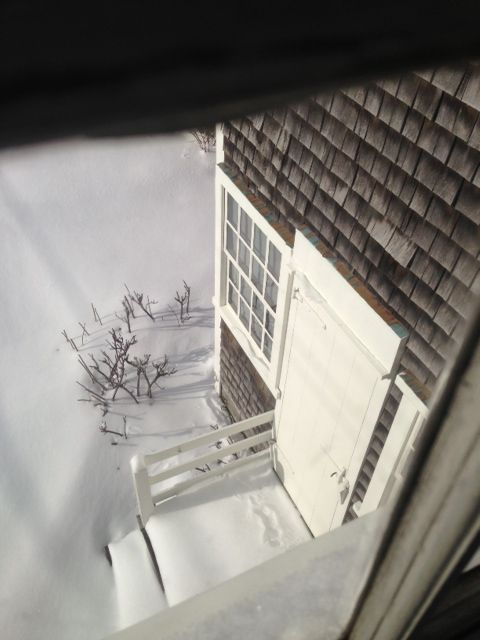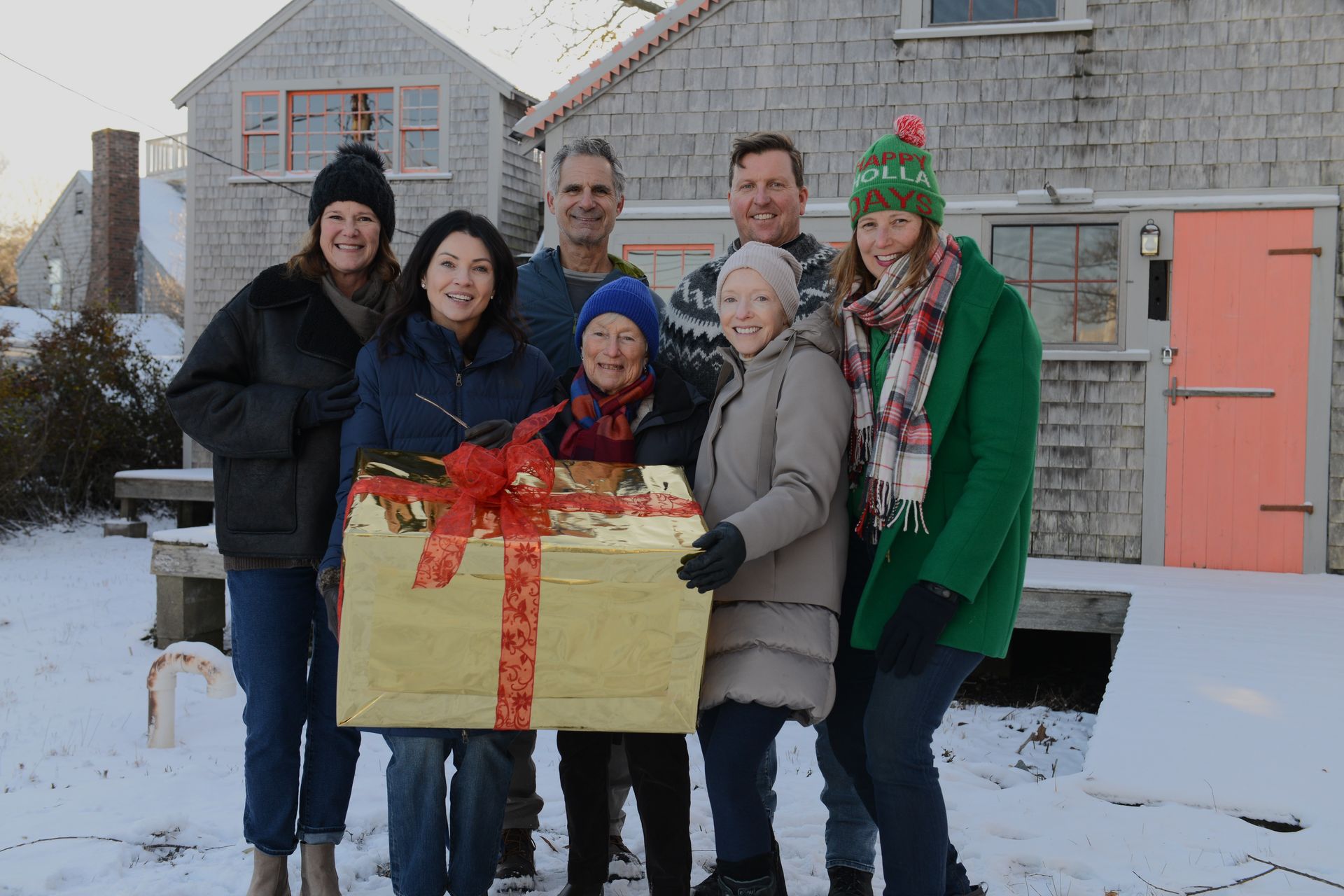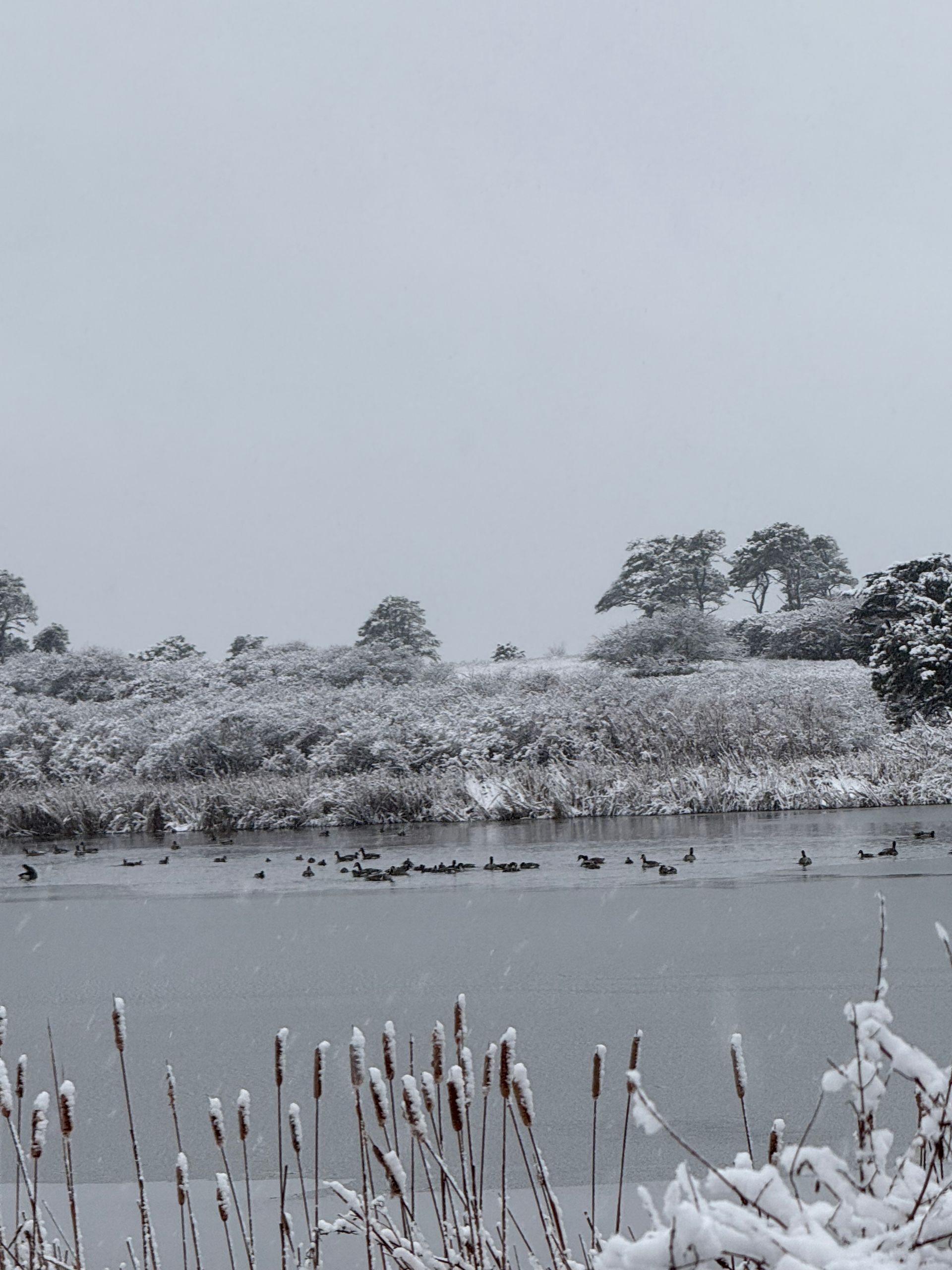Looking East
Or west, if you are considering it’s the west side of the Mitchell House. In the setting sun the week of January 24. I love how the sun has such a warm glow on the House. For the most part, that would be the same setting sun that Maria saw on the side of the House ̶ save for the telephone pole – you can make out its shape there. Sort of right in the middle and running up into the attic window.
You can also see some of the “debris” from work we are doing. First – the Mitchell House chimney is being reparged on the rear. Pen Austin, an island mason who specializes in historic masonry, plaster and paint treatments is conducting that work which was grant funded. She has given this chimney some TLC over the years and is now adding layer upon layer of lime mortar to the chimney. While this is not historically accurate (by 1790s standards when the House was built), it was done to the chimney starting in the late nineteenth century and thus it stays that way – and helps protect it at this point. The chimney was rebuilt at some point – probably in the later part of the nineteenth century – but below the roofline it is completely the 1790 chimney. Believe it or not, that’s not a common thing as when chimneys were rebuilt, a lot of the time they would be rebuilt in the attic spaces (below the roof/ridgeline), too.
The second area is the wood in the yard and the staging. This is for the mason, Wayne Morris, who is working on the conservation of the Maria Mitchell Vestal Street Observatory – also grant funded and this time via a Community Preservation Act grant. He’s completed some work where you see the support on the roof and if it was a better, closer photograph, you could make out the area of the last “parapet” closest to the Mitchell House where he has done some investigating. He will need to re-build those. He has been investigating how the slabs was installed so that he knows how to pull them (they are made of concrete) without damaging them. On that particular one, he found a wood shim. Not unusual, but it was completely rotted and crumbled because it had gotten wet over the last 100 years as water found its way in. That shim will be going away and if something is needed, a steel piece will go in – it doesn’t rot and it doesn’t rust! And it’s the acceptable thing to do in such conservation work here.
JNLF
Recent Posts





